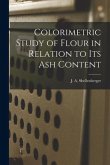The detection of hypochlorous acid (HOCl) in low concentration has remained a hot research area because of its industrial and biological importance. Optical sensors, especially fluorescence probes are very efficient in serving the purpose. Both hypochlorous acid and its conjugate base hypochlorite ion can oxidize electron-rich species. This may trigger a structural change in the molecular probe that, in turn, changes in the optical properties of the probe. Such probes are also used for monitoring concentration levels of HOCl in real samples, such as aqueous environmental samples or an organism (or cell). The relevant biological studies can be performed by bioimaging techniques. This book gives a brief idea about the recent development regarding the colorimetric and fluorometric chemodosimeters for HOCl.
Hinweis: Dieser Artikel kann nur an eine deutsche Lieferadresse ausgeliefert werden.
Hinweis: Dieser Artikel kann nur an eine deutsche Lieferadresse ausgeliefert werden.








